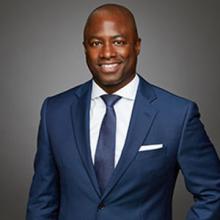Philanthropy'the ties that bind a family together

Philanthropic activity is broadly a family affair that may involve carrying the reigns and building on the activity of previous generations, creating programmes for closeknit family units, equipping the next generation with the habits and skills they will cherish, or creating a sense of identity for large and disparate family groups.
Indeed, 77% of philanthropists noted that strengthening family bonds was one of the primary benefits of philanthropic activity.
Whatever the driving ambition, philanthropists are willing to go to extraordinary lengths to ensure family members are actively engaged, invested and informed. It is often an important benchmark of a family’s philanthropic success.
The Hoare family trust looks to embrace all 2,400 direct descendants of the bank’s founding members through its Golden Bottle Trust with family members able to submit requests for charitable donations of their choosing online. The Eureka Benevolent Foundation, co-founded by Roger Massy-Greene, is a perpetual vehicle for family connectedness and building social capital within the family.

Sir Peter Vardy has challenged himself and his family to give away their wealth he has generated within his lifetime.
Family members bring new perspectives, ideas and learning to philanthropic activities that can and do further their aims and objectives—50% of philanthropists say they turn to family members when seeking advice.
Individual family members may, understandably, also wish to pursue their own passions and interests—the concerns of grandparents and parents may well be very different to those of their children and grandchildren.
“It is”, says Kathy Ackerman-Robins, whose philanthropic activity is channelled through three foundations structured by the age of family members, “important to achieve consensus whatever the approach”.
Philanthropic structures need, however, to offer flexibility if they are to survive generations, and foundations with aims or mission statements that are too tightly focused can find themselves restricted at a time of national emergency. How many foundations could have predicted Covid-19 and its global effect?
 External advisers are often a valued resource when reviewing the activity of family foundations and setting giving guidelines. They can sit above family politics and passions, helping achieve consensus by turning ‘high minded philosophical views into something actionable’.
External advisers are often a valued resource when reviewing the activity of family foundations and setting giving guidelines. They can sit above family politics and passions, helping achieve consensus by turning ‘high minded philosophical views into something actionable’.
Luke Gilgan and Stephanie Trussler, who continue their father’s philanthropic activity through the Peter Gilgan Foundation, recommend that foundations and their giving guidelines are reviewed approximately every seven years.
Families with inherited or entrepreneurial wealth are enormously aware of the position and responsibility they find themselves in, both to society and their children tool in helping the next generation prepare for the lives ahead of them. Philanthropists share stories of their own children embracing giving back from a young age, ‘pushing themselves outside of their comfort zones’, wishing to ‘stretch themselves’ and using philanthropy to ‘seek new experiences’. In one example, 10 families in one Australian city have come together to form a ‘giving circle’ where their children determine charitable giving and volunteering activities.
Legacy is undoubtedly a factor in philanthropic activity—65% of philanthropists cite it as being very important, but it is rarely the primary driver. Many philanthropists, while delighted if their children were to carry on the mantle of philanthropic activity, rarely expect them to do so. Sowing the seeds for a future life of philanthropic activity is often enough.

Those philanthropists that wish to see their organisations or foundations flourish when they are no longer around recognise the need to scale activity.
Read more insights in the new KPMG white paper Disruptive Philanthropists.






